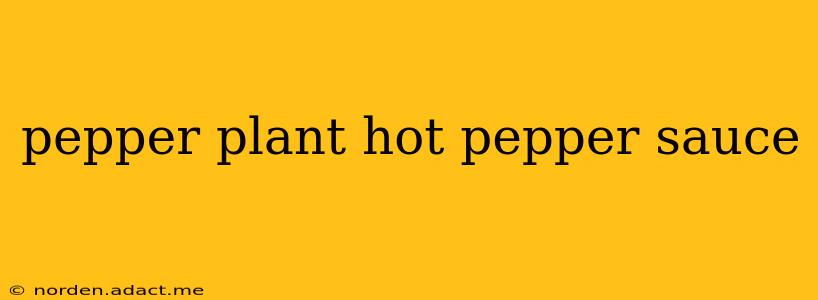The vibrant world of hot sauces is a testament to the incredible diversity of chili peppers. Turning your homegrown pepper plants into a fiery, flavorful hot sauce is a rewarding experience, blending culinary creativity with a touch of garden-fresh goodness. This guide will walk you through the process, from selecting the perfect peppers to bottling your homemade masterpiece.
What Types of Peppers are Best for Hot Sauce?
Many pepper varieties lend themselves beautifully to hot sauce making. The best choice depends on your desired heat level and flavor profile. Some popular options include:
- Habaneros: Known for their fruity sweetness and intense heat.
- Scotch Bonnets: Similar to habaneros, but with a slightly more pungent flavor.
- Serranos: A versatile pepper with a clean, bright heat.
- Jalapeños: Mild to medium heat, making them ideal for a less fiery sauce.
- Ghost Peppers (Bhut Jolokia): Extremely hot, not for the faint of heart! Use sparingly.
Consider blending different pepper types to create a complex flavor profile. For example, combining a milder pepper like jalapeño with a hotter pepper like habanero creates a balanced heat with nuanced flavor notes.
How to Grow Peppers for Your Hot Sauce
Growing your peppers from seed or transplanting seedlings allows you to control the variety and quality of your ingredients. Ensure you provide ample sunlight, well-drained soil, and consistent watering. Regular fertilization can also contribute to a bountiful harvest. Remember to research the specific needs of your chosen pepper variety for optimal results.
What are the Steps Involved in Making Hot Pepper Sauce?
Making hot pepper sauce is a multi-step process, but the results are well worth the effort. The process generally involves:
- Harvesting: Pick your peppers at their peak ripeness for optimal flavor and heat.
- Cleaning and Preparation: Wash the peppers thoroughly and remove stems. Consider wearing gloves to avoid skin irritation from the capsaicin.
- Blanching (Optional): A quick blanch can help soften the peppers and enhance their flavor.
- Roasting (Optional): Roasting brings out the peppers’ sweetness and creates a smoky flavor.
- Blending: Combine the peppers with your chosen ingredients – vinegar, garlic, onions, spices – and blend to your desired consistency.
- Cooking: Simmering the blended mixture helps to develop the flavors and sterilize the sauce.
- Bottling and Storage: Fill sterilized bottles and store in a cool, dark place.
How Long Does Homemade Hot Pepper Sauce Last?
Properly made and stored hot pepper sauce can last for several months, sometimes even up to a year. Always ensure your bottles are sterilized before filling and store them in a cool, dark, and dry environment. Refrigeration extends the shelf life.
What Ingredients Can I Add Besides Peppers?
The beauty of homemade hot sauce lies in its versatility. Experiment with complementary flavors:
- Vinegar: Provides acidity and acts as a preservative.
- Garlic and Onions: Add savory depth.
- Spices: Cumin, coriander, oregano, and others can enhance the flavor profile.
- Fruits: Mangoes, peaches, and other fruits offer sweetness and complexity.
- Herbs: Cilantro, basil, and other herbs add freshness.
Can I Make Hot Sauce Without Cooking?
Yes, you can create a raw hot sauce by blending your peppers and other ingredients without cooking. However, keep in mind that uncooked sauces have a shorter shelf life and may require refrigeration.
What is the Best Way to Store Homemade Hot Sauce?
Store your homemade hot sauce in clean, sterilized bottles in a cool, dark, and dry place. Refrigeration is recommended to extend the shelf life, especially for uncooked sauces.
This comprehensive guide provides a foundation for your hot pepper sauce journey. Remember to prioritize food safety and enjoy the process of creating your own unique spicy creation!
